
Find the Cheap Yao'an Hotels
Enter your dates for the latest hotel rates and availability.
Swipe up to view more
Filter by:
Hotel Star Rating
≤2345
Popular Filters
Amazing 4.5+Great 4.0+Good 3.5+Pleasant 3.0+We found 11 hotels for you in Yao'an
Choose your travel dates to see the latest prices and deals.
Most Booked
Lowest Price
Closest to Downtown
Highest Rated

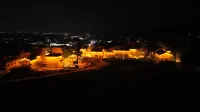
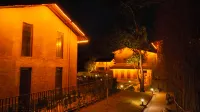
Hotel near Yao'an
Cchzhero 2024.07.21
The room environment is very comfortable and the location is at the north gate of the shiny. Outside the window is the green rice field, which is pleasing to the eye. The only fly in the ointment is that the pillows on the bed are too high, resulting in poor sleep quality. In addition, the air conditioner switch was hidden for a long time.
Excellent
48 reviews
4.5/5
Price from
Rs 8,816
per night
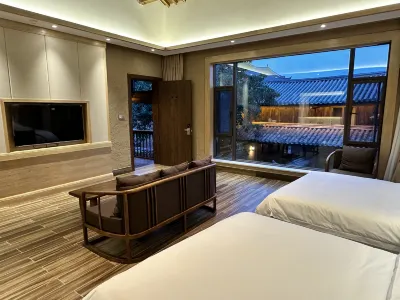
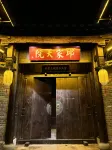

Hotel near Yao'an
GGuest User 2024.10.05
Facilities: very good, with a simple artistic conception.
Hygiene: very, very good
Environment: Quiet, the room is far apart, do not disturb each other.
Service: Very very good, very very intimate, answer all questions. Strong service ability.
Perfect
17 reviews
4.9/5
Price from
Rs 6,565
per night
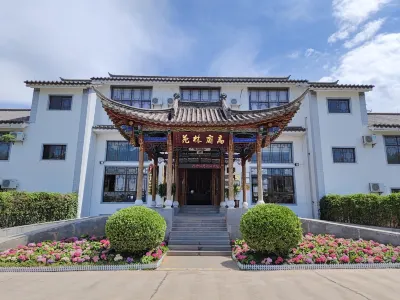
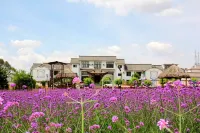
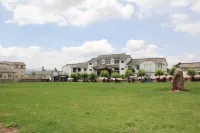
Hotel near Yao'an
GGuest User 2023.10.30
Facilities: Although the hotel is a bit old, it still feels very good, the antique courtyard is very quiet
Health: good
Environment: Just at the entrance of the ancient city of Guangxu, you can walk 100 meters to enter the ancient city, separated from the military and civil service management house by a wall, there are few tourists in the ancient city, very quiet. Maybe the publicity is not in place, and there are few people coming. We are running to ”a Yao'an City, half a step into Yunnan history” to see it. Everyone should come and see.
Service: Good, complimentary breakfast, service is very intimate and enthusiastic.
Excellent
100 reviews
4.3/5
Price from
Rs 4,236
per night

You Might Like
Hotels With BreakfastHotels With Twin RoomHotels With 1 Double BedHotels With Swimming PoolHotels With Free Cancellation



Hotel near Yao'an
GGuest User 2024.07.27
服務周到 前台禮貌待人 本來常出差人還沒到東西就寄到到 提前打電話也是熱情接待 東西拉下來細心留存 這家酒店細緻讓人感覺賓至如歸 衞生做的不錯 餐食營養豐富真心感覺的很不錯。
Outstanding
104 reviews
4.8/5
Price from
Rs 6,183
per night
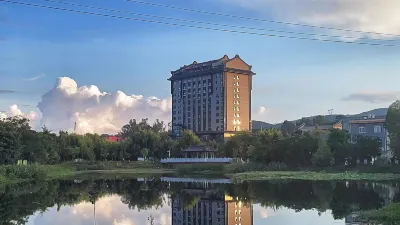


Hotel near Yao'an
GGuest User 2024.02.17
是高速堵車時臨時訂的,房間衞生是很好的但是半夜被空調熱醒了,打電話詢問前台(特地看了酒店提供24小時前台服務),前台衹是和我説是中央恆温空調,但以我個人住酒店的經驗恆温中央空調也不該升到28、29℃,而前台提供的解決辦法居然是讓我把空調關了。
房間排氣扇和衞浴燈是綁定的開關,如果要開排氣扇就必須要開燈
明明是高檔酒店但是隔音shi一樣的爛,晚上被熱醒以後關了空調,結果就聽到外面公路車子開過的聲音和附近人家養的雞打鳴的聲音,對我這種有嚴重睡眠障礙的人是非常差勁的居住體驗
設施:房間內的桌子不適合用筆記本電腦,鼠標也不能直接在桌子上用,次卧插頭在插筆記本時充不進電,主卧可以,不知道是斷電了還是怎麼的
衞生:衞生是乾淨的,但也衹是衞生乾淨了
環境:離高速出口非常近,算是便利吧
服務:很難評價的服務,早上的服務和晚上的服務完全是兩種態度,衹能説如果貴酒店不能做好晚上員工的培訓建議把24小時前台這項服務內容去了別誤導人
Outstanding
131 reviews
4.6/5
Price from
Rs 7,290
per night



Hotel near Yao'an
鱼鱼钩钓鱼 2019.04.05
It's okay, the price is cheap, there is also a machine to print the invoice, and also send drinking water, next time I go to live, praise and recommend it, a good place, easy to eat around.
Very Good
2 reviews
4.0/5
Price from
Rs 2,137
per night
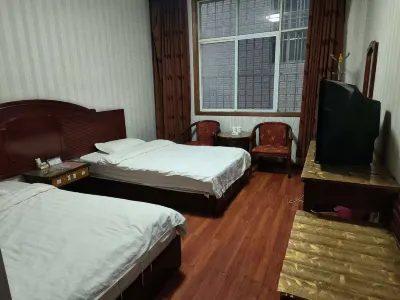
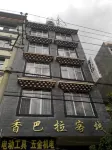
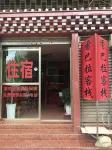
Hotel near Yao'an
GGuest User 2022.12.02
Convenient transportation, there are supermarkets below, and there are more restaurants! The boss is very nice and also provides us with routes for travel, and will come back often in the future
Very Good
9 reviews
4.2/5
Price from
Rs 1,527
per night


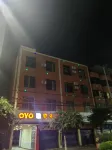
Hotel near Yao'an
GGuest User 2022.11.06
The hotel is newly renovated, the room is clean and fresh, the quilt is new, and the living is very comfortable. The window is installed with a broken bridge, very soundproof, this price is also very cost-effective, very pleasant stay experience.
17 reviews
3.9/5
Price from
Rs 1,908
per night
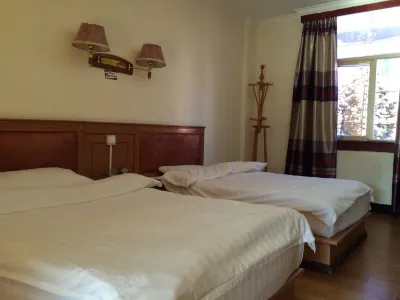


Hotel near Yao'an
GGuest User 2020.09.29
The hotel in the county seat is not bad. The bed linen is a bit yellow but smells like washing powder. It is very clean. The rooms on both sides are very quiet, and the aunt has a good attitude. Remember to bring your own towels.
Outstanding
5 reviews
4.6/5
Price from
Rs 2,862
per night



Hotel near Yao'an
The Yao'an Xinyuan Hotel was recently opened in 2023, making it a fantastic choice for those staying in Yao'an. Nanhua Railway Station is the closest major transportation option, approximately 65km away. The nearest railway station is Nanhua Railway Station, approximately 65km away. In their spare time, guests can explore the hotel's surroundings.
Price from
Rs 2,252
per night
Top hotel picks in Yao'an
See all
Check out these top-booked hotels from the past 30 days!
No.1
0.0/5
0 reviewYao'an Zhengxuan Hotel
Hotel near Yao'an
"Good Location"
Select dates to view pricesNo.2
4.0/5
2 reviewYao'an Time Inn
Hotel near Yao'an
"Good Location"
Select dates to view pricesNo.3
0.0/5
0 reviewYao'an Xinyuan Hotel
Hotel near Yao'an
"Good Location"
Select dates to view pricesNo.4
4.6/5
5 reviewYao'an Jiayuan Hotel
Hotel near Yao'an
"Good Location"
Select dates to view pricesNo.5
0.0/5
0 reviewYao Anruihe Hotel
Hotel near Yao'an
"Good Location"
Select dates to view pricesNo.6
4.2/5
9 reviewYao'an Xiangbala Inn
Hotel near Yao'an
"Good Location"
Select dates to view pricesNo.7
3.9/5
17 reviewYao an Supplies Hotel
Hotel near Yao'an
"Great stay!"
Select dates to view pricesWhat travellers say about Yao'an attractions
Discover these places worth visiting in Yao'an and select a hotel nearby for ultimate convenience
Yao’an Guanglu Ancient Town
阴阴阳宝瓶Yao'an Guangxuan Ancient Town, the county scenic spots, to Yao'an must punch in, there is a sense of age, you can feel it, as a county, with this culture, it is not appropriate.
Yao'an Road Military and Civil Administration Office
境境无界Yao'an is the earliest famous place in Yunnan Province and the earliest place to be seen in history. There is a saying that "one Yaozhou city, half of Yunnan history". The reason for this saying is that Guanglu Ancient Town in Yao'an County is the birthplace of Gao's family, the prime minister of Dali State. Since the Tang Dynasty, the Gao family has inherited positions in Yunnan for 54 generations, creating a legendary clan with nearly 700 years of official history. The Gao family has lasted for more than 700 years and was once an important official of the local government of the Song, Yuan, Ming and Qing dynasties. Guanglu Ancient Town has become an important political, economic and cultural center in Yunnan, and occupies an important historical position in Yunnan history. The Tusi system is a special political system in which the Yuan, Ming and Qing dynasties ruled the local people in ethnic minority areas by enfeoffment of local leaders and hereditary official positions. In the Yuan Dynasty, "Lu" was a special administrative level higher than "Zhou". Yaoan Road Military and Civilian General Administration Office, commonly known as Gao Tusi Yamen, was once the Yaoan Prefecture of the Nanzhao and Dali Kingdoms, the Yuan, Ming and Qing Dynasties, and the two-level local governors and local governors of Yaozhou. The Lufu was the local administrative power center of the Yuan Dynasty's provincial system. The Yuan Dynasty set up the Yaoan Road Military and Civilian General Administration Office in Guanglu, which was inherited by the descendants of the famous Gao family at that time, so it was called "Gao Tusi Yamen". The Gao family once had a good story of "nine Shuangs, seven dukes, eight prime ministers, three kings, one emperor, and five marquises".
Yaoan Road Military and Civilian General Administration Office, also known as the hometown of Gao Ranggong, commonly known as Gao Tusi Yamen, is composed of three halls: the entrance hall, the hall, and the main hall. The entrance hall is five bays wide and four bays deep; the main hall is five bays wide and four bays deep, all with single eaves and tiles, and there are arch decorations under the eaves of the main hall. There are two wings on each side of the main hall, making the entire building into two courtyards, or two courtyards with five patios, closely connected to form a whole.
Yao'anxian Museum
境境无界Yao'an County Museum was established on January 1, 1987, with the approval of the Yunnan Provincial Department of Culture, as a local comprehensive museum, with the national cultural relics protection unit Defeng Temple as the site. Defeng Temple was built in Mingyongle two years (1404 AD), and Beijing Palace Palace is a contemporary building, the whole complex is composed of the main hall, two ears, two boxes, hall, main entrance and the attached building of the Tibetan Temple, covering an area of 3396 square meters, the complex area of 2335 square meters. Among them, the west wing room, the hall is the museum exhibition room, a total of 1100 square meters. Yao'an County Museum has more than 600 cultural relics in its collection (including: 11 cultural relics at the national level; 8 cultural relics at the national level; 82 cultural relics at the national level, a total of 101). Yao'an County Museum ranks third in Yunnan Province's same-level museums, Yao'an County has the reputation of Chuxiong County's cultural relics, and Yao'an County Museum has been announced as a patriotic education base by Yunnan Province.
Longhua Temple
境境无界Longhua Temple (Living Buddha Temple), built in the late Tang Dynasty (904~907), has a history of more than 1,000 years, is Yunnan's oldest Buddhist monastery and the most well-preserved ancient palace-style buildings. The temple is preserved with wood carvings, brick carvings, stone carvings and calligraphy and painting artwork.
Defeng Temple
境境无界Defeng Temple in Yao'an County is the seventh batch of national cultural relics protection units. The temple was built in the second year of Yongle in the Ming Dynasty (1404 AD) and is a contemporary building of the Forbidden City in the capital. It has a history of more than 600 years. Defeng Temple is a three-story ancient building complex, consisting of a gate, a hall, two wings, two halls, two ears, Ksitigarbha Temple and Dehua Inscription Pavilion. It covers an area of 3,353 square meters. Its layout is symmetrical, the structure is rigorous, and it has obvious characteristics of central axis symmetry. The main hall is made of stacked wood brackets, connected by mortise and tenon rivets, and interlocking without any traces of nails or wedges. It is said to be built by a divine craftsman.
FAQs About Hotels in Yao'an
How do I book a hotel on Trip.com?
To book a hotel on Trip.com, simply enter your destination, travel dates, and the number of guests on the page. Then, browse through the available hotels and select the one you want to book. Follow the prompts to enter your payment information and complete the booking.
How do I get hotel deals on Trip.com?
There are several ways to find affordable hotels on Trip.com. You can narrow down your search results by filtering hotels according to your preferred price range, or you can sort the results by price to view the cheapest options first.
Where can I find hotel deals on Trip.com?
Trip.com offers a wide variety of hotel deals and promotions that are available throughout the year. You can easily find these special offers on our deals page. What's more, if you are a member of our loyalty program, you can sign in to your account and discover exclusive discounted rates at hotel list pages.
How can I get lower prices for hotels?
Sometimes booking hotels midweek is cheaper, but it also depends on the season.
How many hotels are listed on Trip.com?
You can find over 5 million hotels in more than 230 countries or regions on Trip.com. Haven't decided which hotel to book? Browse our site to get ideas!
Can I cancel or change my hotel bookings on Trip.com?
It depends on the hotel policy and date of cancellation. Please check the policy section of the related hotel pages. To cancel or change your bookings, sign in to your Trip.com account, go to "My Bookings", and follow the instructions.
How do I contact Trip.com customer support?
You can contact Trip.com's 24/7 customer support by visiting the Help Center on Trip.com and submitting a request. You can also contact us by phone or service chat, depending on your location.
Local Travel Info
| Highest Price | Rs 26,259 |
|---|---|
| Lowest Price | Rs 1,985 |
| Number of Reviews | 1,029 |
| Number of Hotels | 60 |
| Average Price (Weekdays) | Rs 5,645 |
| Average Price (Weekends) | Rs 5,642 |
Keep Exploring
Flights from Popular Cities
Karachi to Islamabad FlightsKarachi to Lahore FlightsIslamabad to Karachi FlightsLahore to Karachi FlightsIslamabad to Skardu FlightsLahore to Islamabad FlightsLondon to Lahore FlightsKarachi to Peshawar FlightsKarachi to Skardu FlightsKarachi to Multan FlightsPeshawar to Karachi FlightsManchester to Islamabad FlightsIslamabad to Lahore FlightsDubai to Lahore FlightsIslamabad to Saidu Sharif FlightsKarachi to Dera Ghazi Khan FlightsSialkot to Gwadar FlightsQuetta to Bahawalpur FlightsChitral to Islamabad FlightsGwadar to Lahore FlightsGwadar to Karachi FlightsIslamabad to Sialkot FlightsSkardu to Karachi FlightsSkardu to Islamabad FlightsKarachi to Quetta FlightsLahore to Multan Flights